Lamborghini Marzal: Marcello Gandini’s Amazing Masterpiece—Part 2
Images: Archivio centrale dello Stato/Stile Bertone, RM Sotheby’s, Gautam Sen
Just a few strong lines defined the overall form of the car. A thin black rubber strip along the flanks served as an almost straight line through the beltline, demarcating the body into two halves, and at the same time, defining the cut-off for the top edge of the rear wheel arch. Another line marked out the sharp-edged bonnet line, which then disappeared, and reappeared as a subtle hip line on the rear fenders of the car. A third line that started at the base of the A-pillar, arched up to define the windscreen, swept back over the roof, and arched softly down to a fastback profile, ending with a sharp Kamm-tail-style cut-off at the rear.
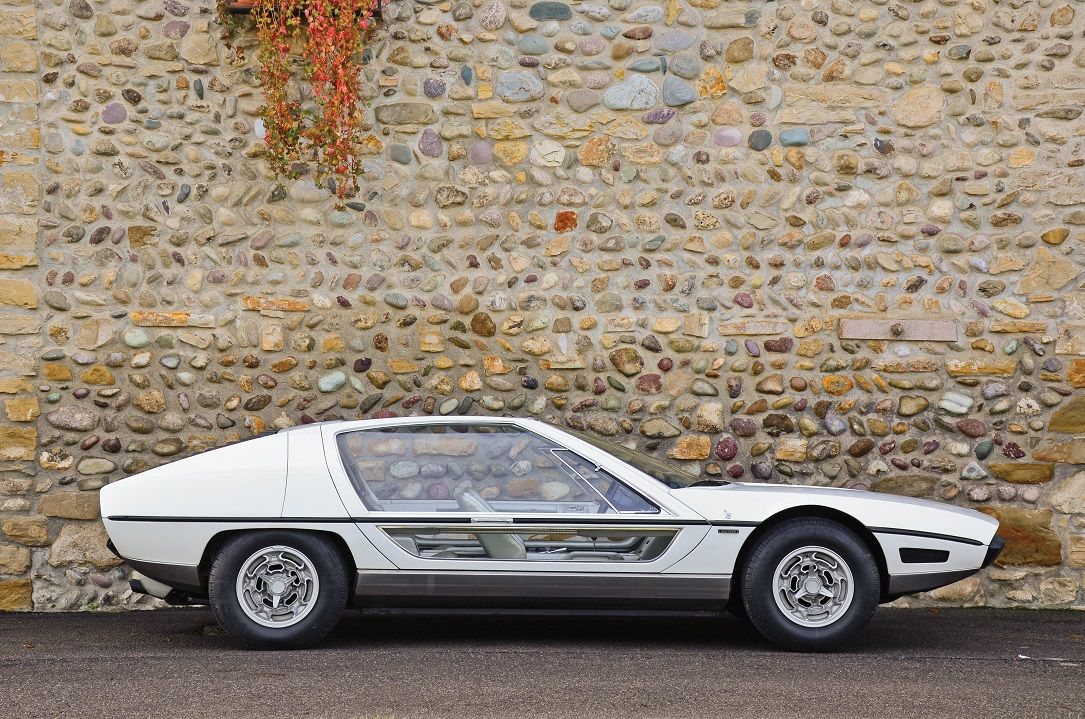
The big, heavy gullwing doors opened with a clever system of springs, pulleys and shafts taken from steering column components. What made the doors even more striking was their use as important design elements, with large transparent glass panels dominating, right down to the level of the doors’ sill edges, which, combined with the smoked glass roof, gave the car a feeling of futuristic light and airiness.
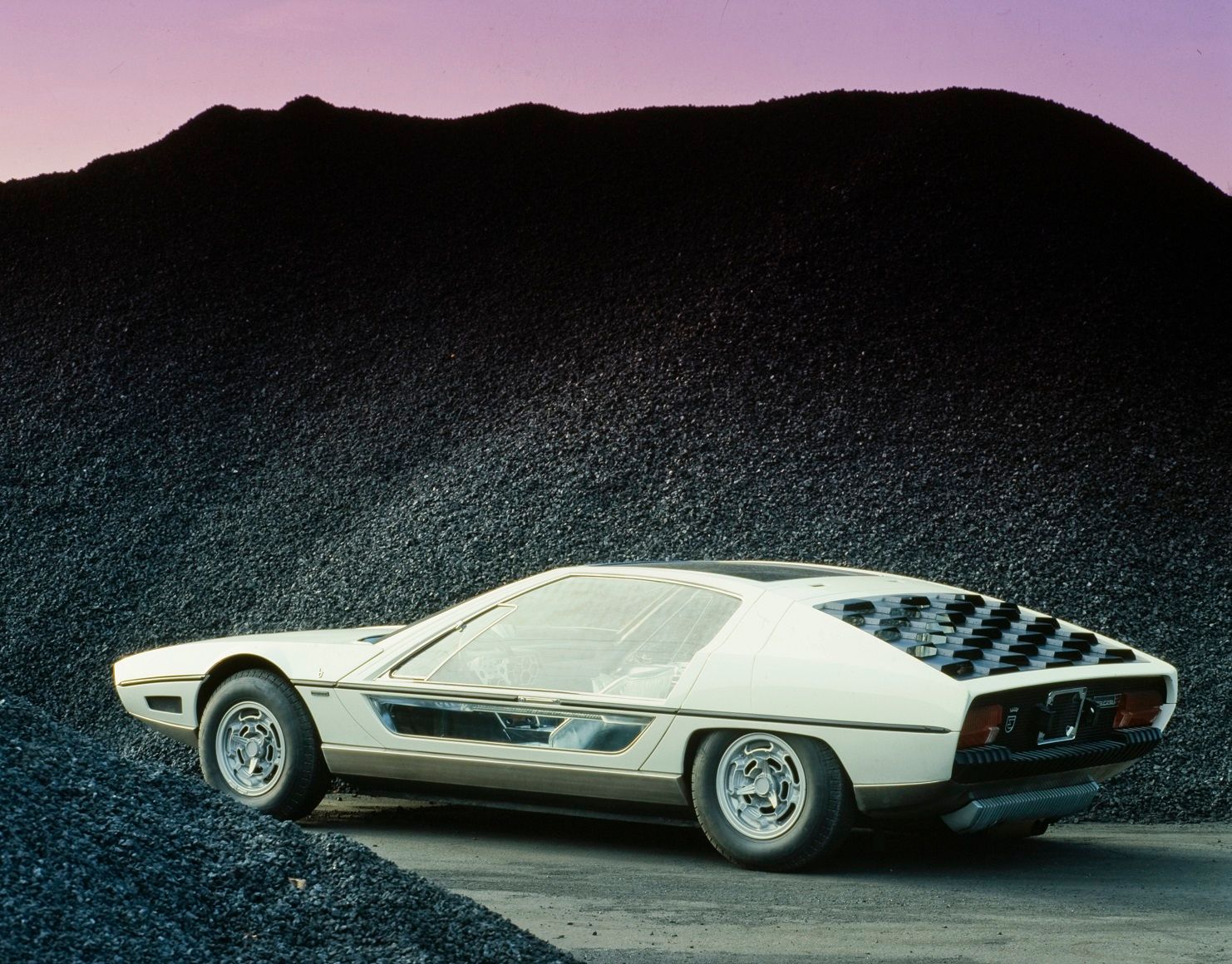
The front, which was reduced to a narrow slit for the grille, was characterized by six slender Marchal quartz-iodine lamps, the narrowest available then. Housed in, what could be called a beak-like section between the leading edge of the bonnet and the very innovative black rubber bumper, the lamps had a menacing attitude about them.

If the exterior was startlingly beautiful, the interior was strikingly futuristic, with the same honeycomb motif—as of the louvers—repeated on the dashboard and the center console housing the minor instruments and commands. The main instrumentation too featured the hexagon theme, as did the steering wheel spokes and center (though this wheel alternated with another simpler two-spoke design, as can be seen in some period photos).
“A Bertone design so fresh that everything else looks old fashioned,” declared American magazine Road & Track in its July 1967 issue.
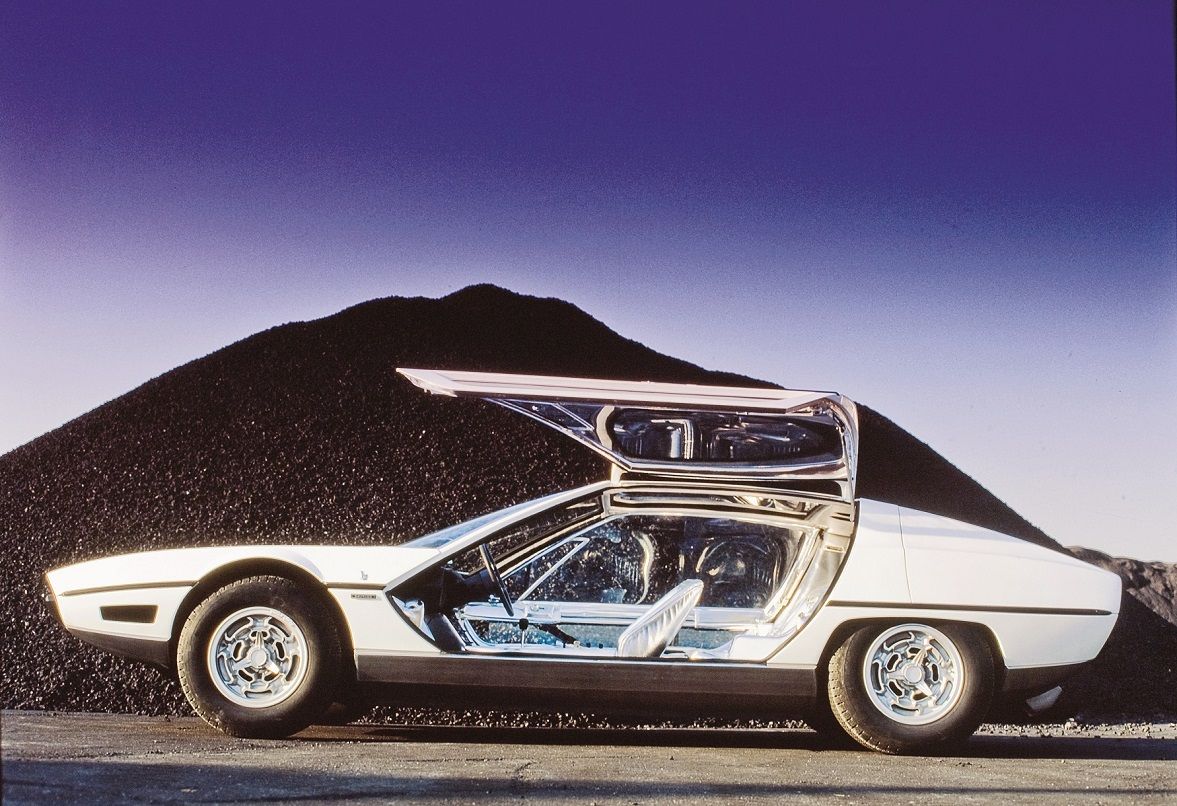
“It is seldom that an entirely fresh approach to automobile design is seen,” wrote Road & Track. “The Marzàl, a 4-seat Bertone berlinetta built around Lamborghini's new 2-liter, 6-cyl transverse engine, is so fresh it is startling. Normally blasé R&T staff members stopped what they were doing when the Marzàl photos were passed around. Despite the presence of some very attractive ‘conventional’ cars at Geneva, the Marzàl is the most significant design in several years.”
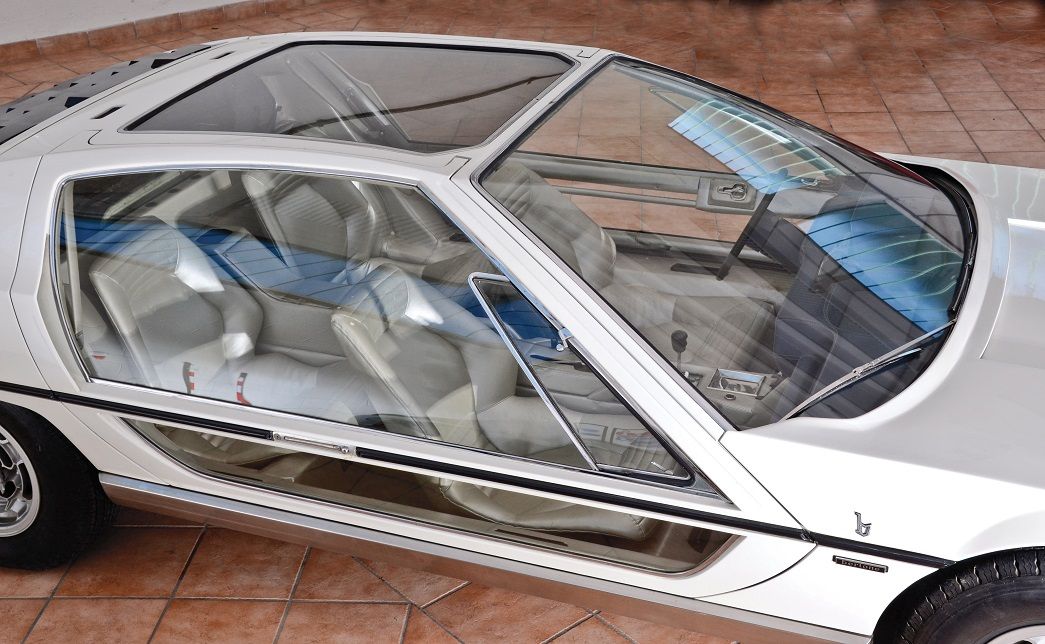
Two months later, on 7th May 1967, Prince Rainier of Monaco—with Princess Grace as passenger—drove the Lamborghini Marzal as a course opener before the start of the Monaco Grand Prix.
The 25th May 1967, issue of l’Auto Journal concluded, “Needless to say, after driving the Marzal, all current cars seem old-fashioned,” in an article where they interviewed and featured the Marzal’s designer, Marcello Gandini.
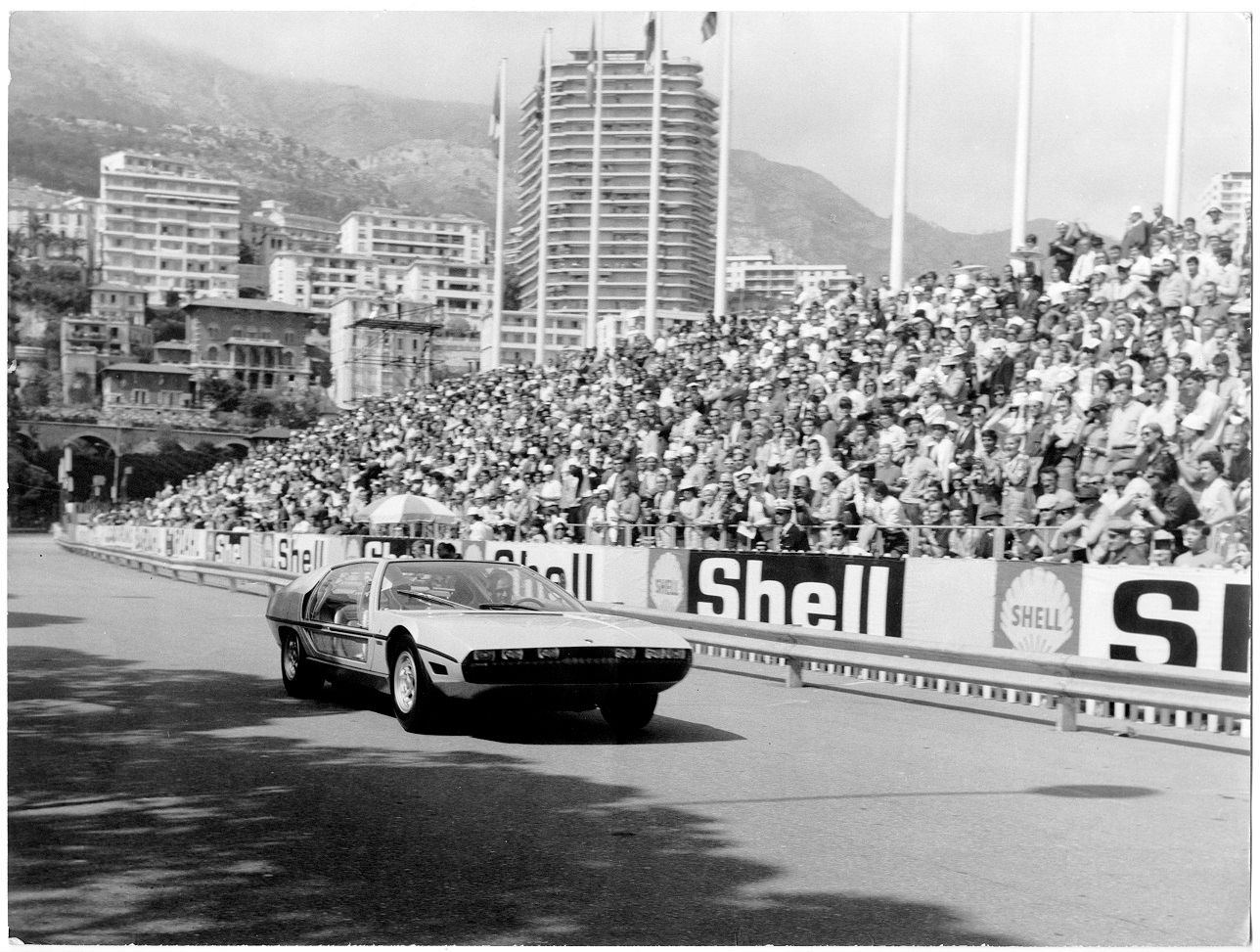
“Having seen the Lamborghini Marzal, we asked who designed it,” wrote l’Auto Journal. “Though the Marzal wears the badge of Bertone, the person in charge of its design is a young Turinese of 26, called Marcello Gandini, who already has several cars in his portfolio, including the Miura.”
Amusingly enough, the magazine noted that Gandini, “is rather modest and of a rather difficult character, which, perhaps, prevents him from being already famous.”
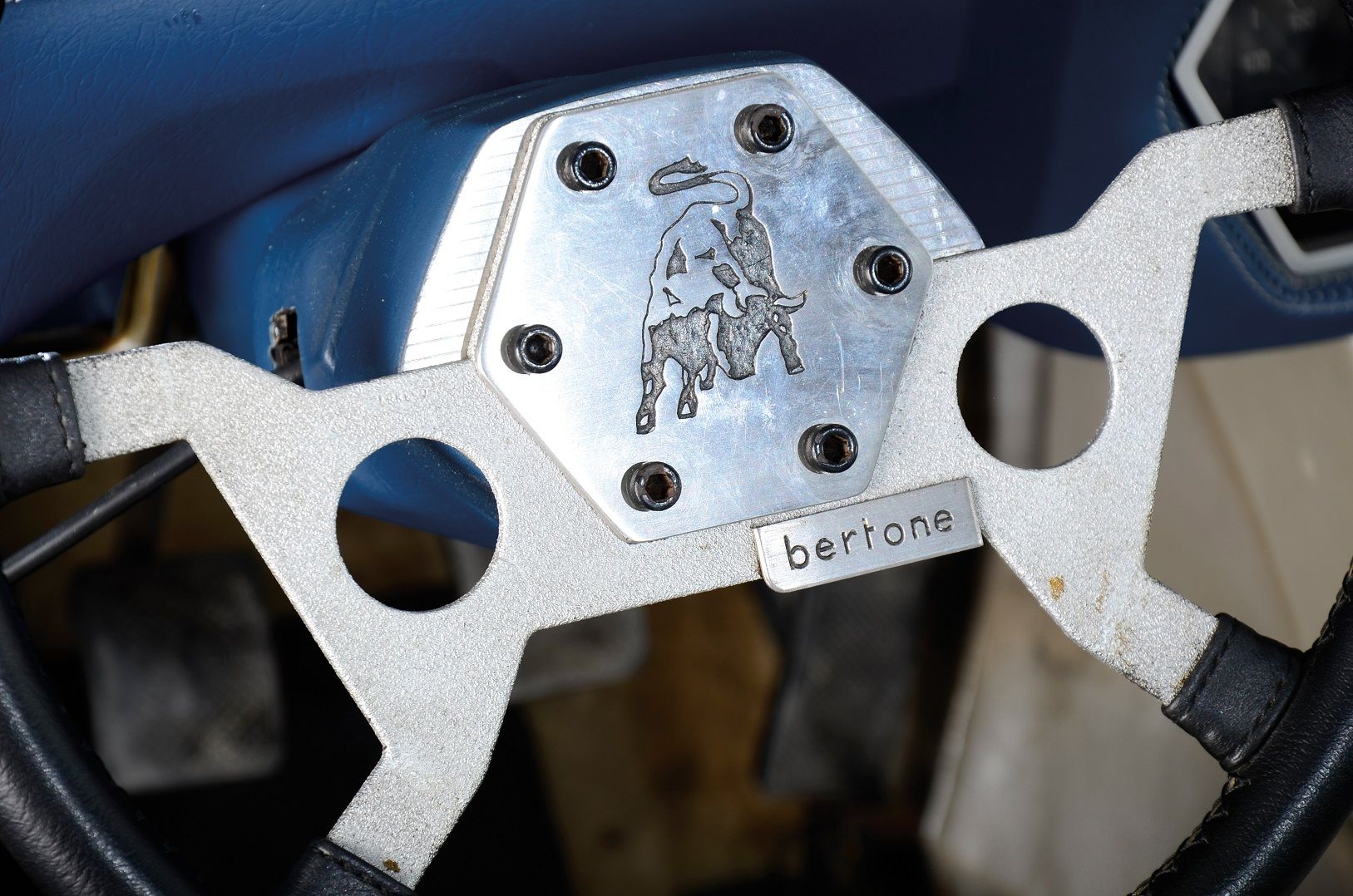
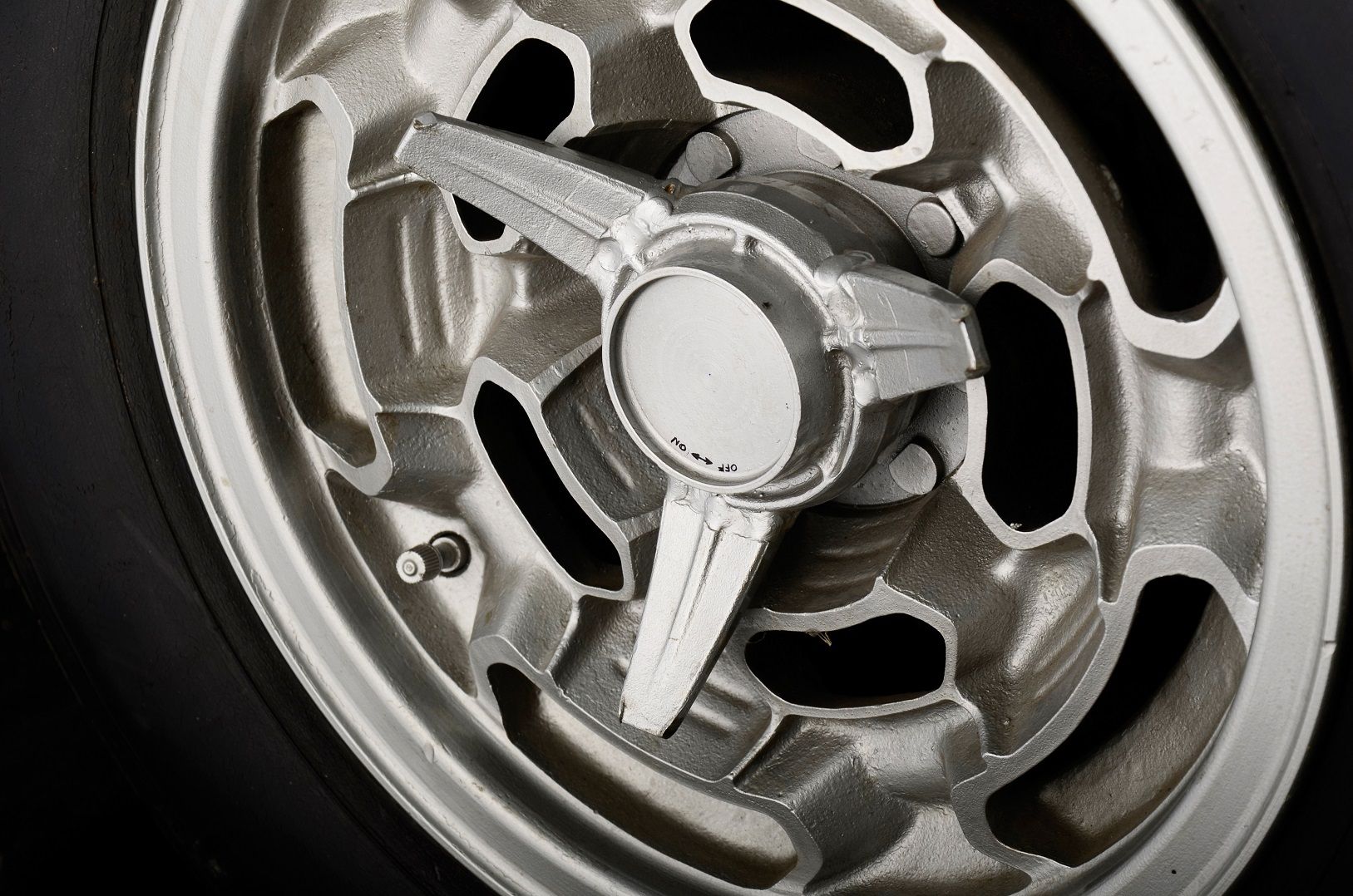
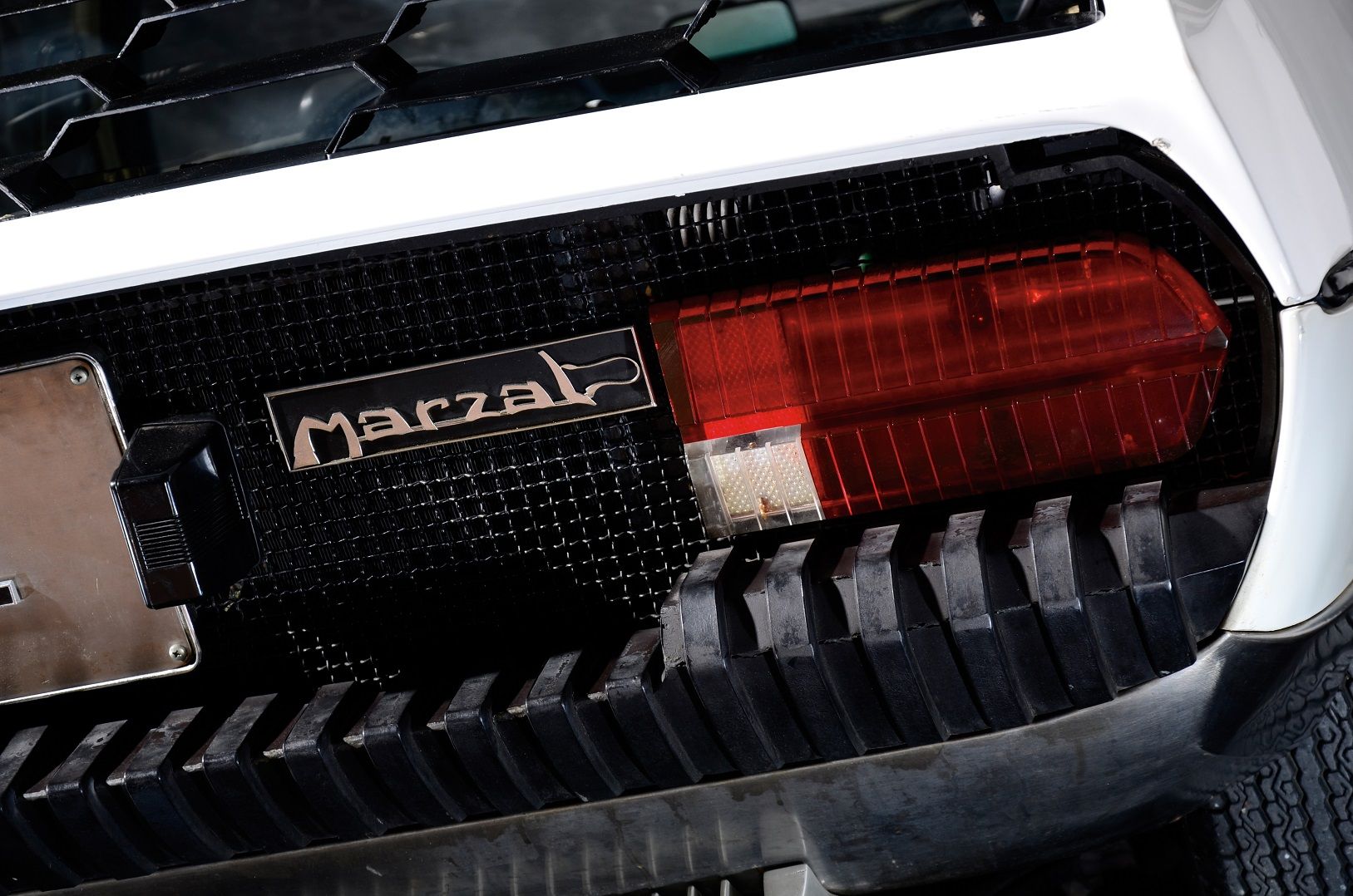
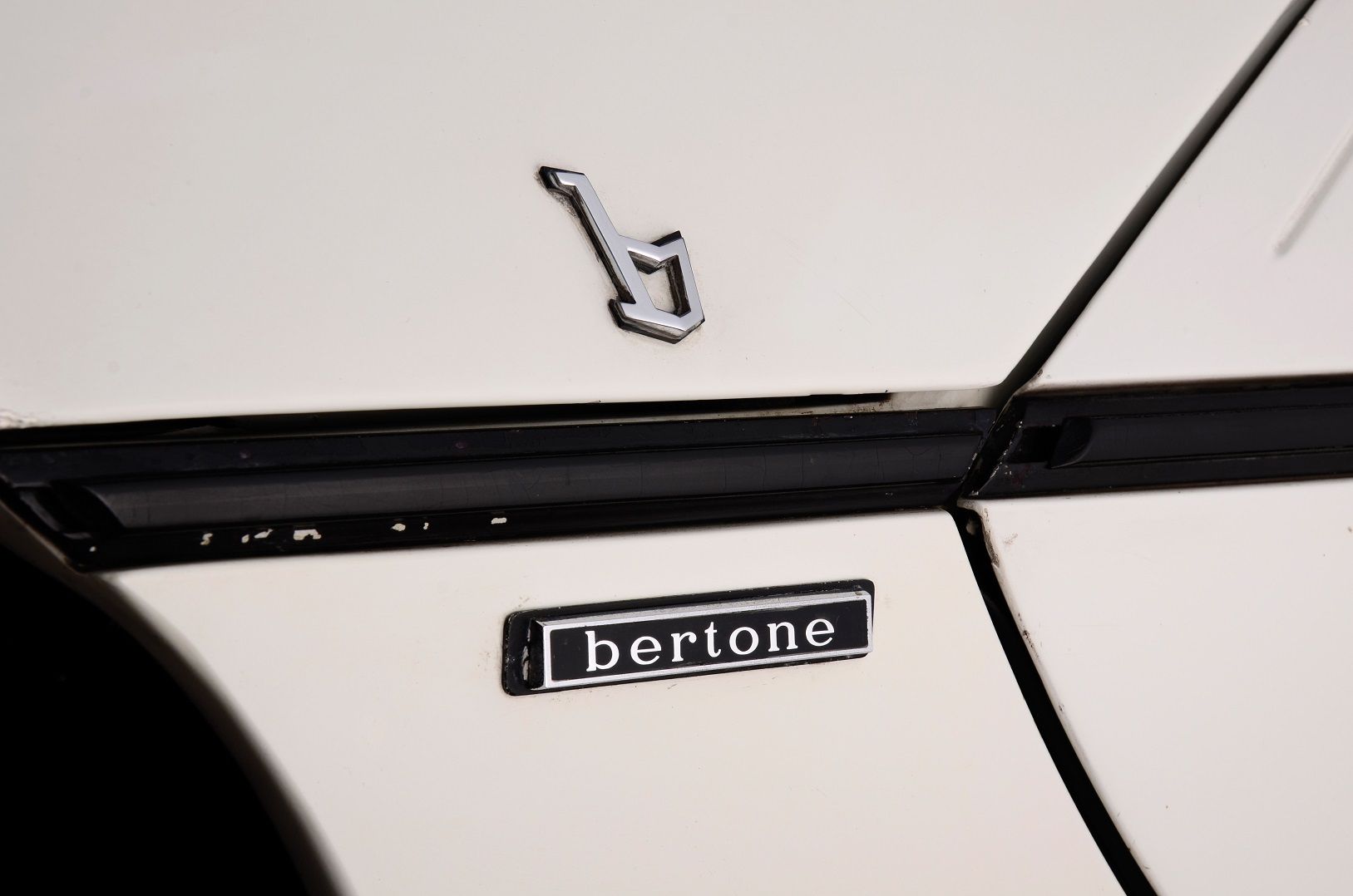
Four of the senior editors of the prestigious Swiss publication L'Année Automobile for the year 1967–68 managed to spend a whole day in the Marzal, and decided that, if Lamborghini had put the car into production, they would have had no hesitation declaring it the ‘Car of the Year’!
As far as Ferruccio Lamborghini was concerned, he did not care for those magnificent wing-like glass doors, which according to him “offered no privacy: a lady’s legs would be there for all to see.” The biggest issue was that the Marzal would have cost close to that of Lamborghini’s ‘full-size’ cars. People paying V12 kind of money would surely not settle for a mere six.
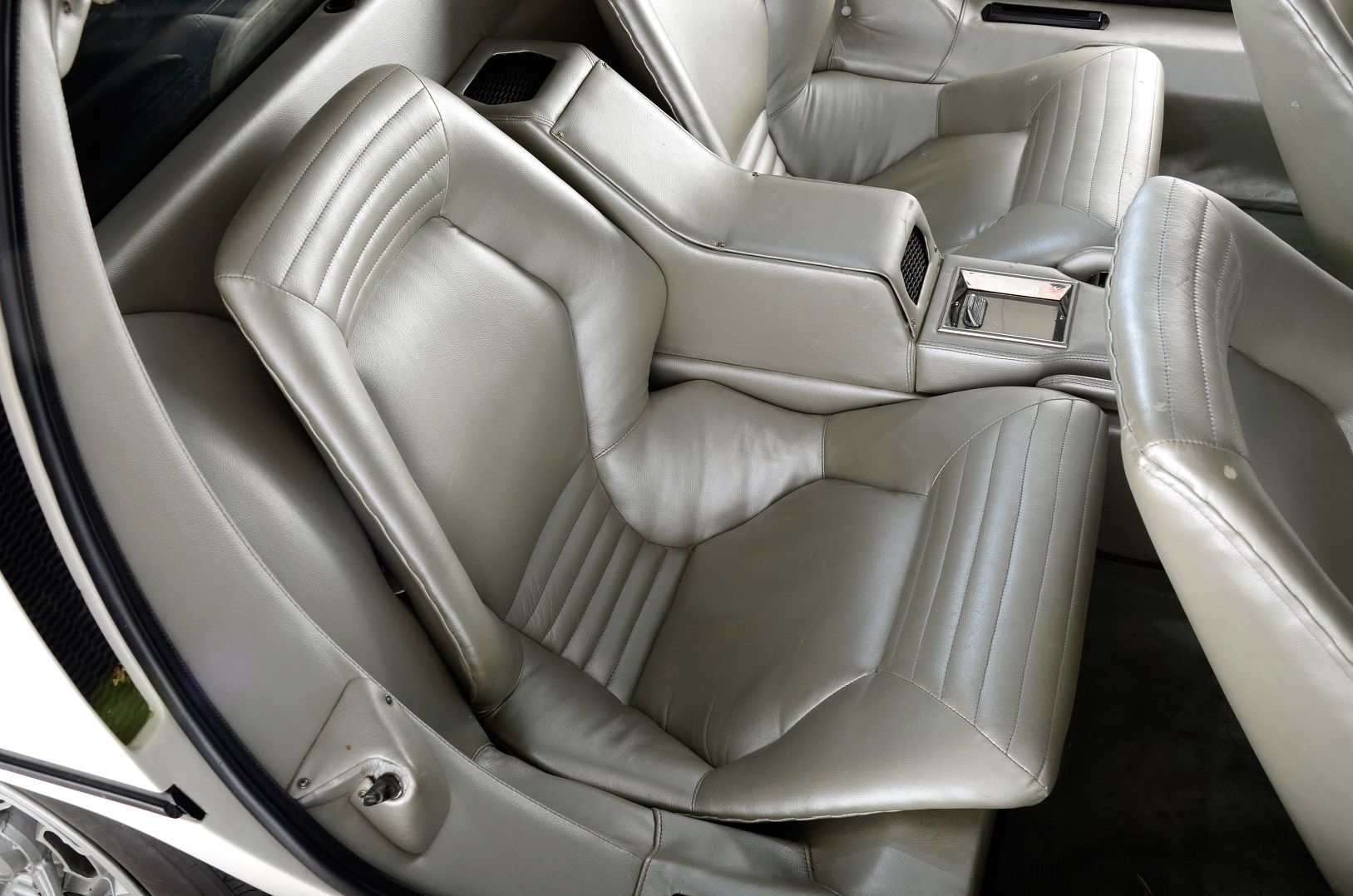
After the various rounds of the motor shows and those exclusive test drives with the likes of l’Auto Journal and L'Année Automobile, the Marzal was ‘retired’, spending the next 44 years of its life as one of the showpieces of Bertone’s in-house museum. When Bertone had financial problems in 2010–2011, the Marzal came up for auction on 21st May 2011, and was acquired by Swiss Lamborghini collector Albert Spiess.
Marcello Gandini has fond memories of the Marzal, pointing out to the author the petrol pump where he had brought the car for refueling soon after it was ready, when the pump attendant stood there gawking, a completely disbelieving look on his face, convinced that a spaceship had indeed landed!
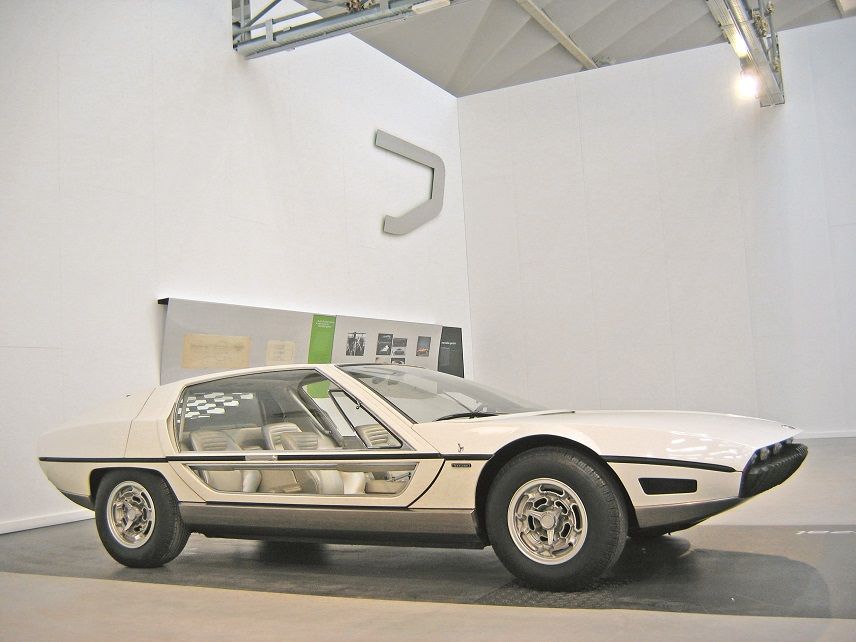
With the Marzal, the star of Bertone took on a new trajectory with the Lamborghini marking a significant turning point, and remaining since then, a veritable masterpiece of automotive design.
If you would like to know more about the Lamborghini Marzal, check out this book: https://www.daltonwatson.com/Lamborghini-At-the-Cutting-Edge-of-Design-p/lamborghini.htm
Comments
Sign in or become a deRivaz & Ives member to join the conversation.
Just enter your email below to get a log in link.
